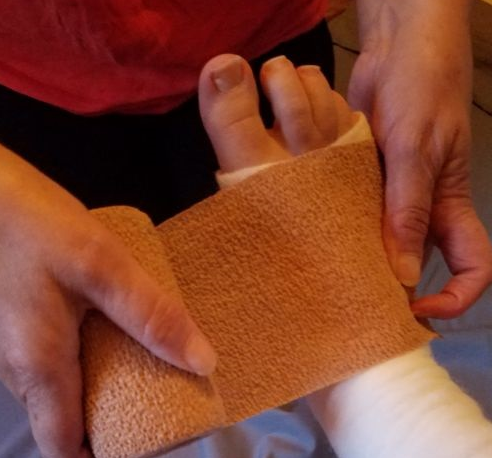anatomy of laparoscopic training
Almost all organs in the human body are covered with thin transparent fabric that prevents them from rubbing against each other, has a trophic function, adsorbs excess fluid and helps maintain a constant internal environment. This tissue is called the peritoneum, and in some places, for example along the anterior surface of the intestine, it forms something like an apron.
Large and small oil seal
In the process of development, man came on his feet, made his stomach and internal organs defenseless. To reduce their possible trauma, an additional organ was formed. The greater omentum is a duplicate of the peritoneum (four leaves), which starts from the surface of the abdomen and goes down to the transverse colon. This section of the anatomy is called the gastrointestinal tract. It contains vessels and nerves. The free edge of the omentum falls down and covers, like an apron, the small intestine. A duplicate of the peritoneum also goes behind the transverse colon, intertwined in the mesentery and then into the parietal peritoneum.
large oil seal
The space between sheets of connective tissue filled with adipose tissue. This gave the organ its specific name - a great omentum. Omentum's anatomy differs slightly from the structure of his "older" brother. The small epiploon consists of three ligaments that pass one to another:
hepatoduodenal (from the beginning of the liver to the horizontal branch of the duodenum);
liver-stomach (from the liver to the stomach less curvature);
membrane ligament.
Fill bag
This is a large gap formed by the peritoneum. In front of the bag, the back wall of the stomach, small and large omentum (gastrointestinal tract) limits the bag. It is the parietal sheet of the peritoneum, the surface of the pancreas, the inferior vena cava, the superior pole of the kidneys and the adrenal glands are behind. At the top is the caudate patch of the liver, and below is the mesentery of the transverse colon.
omentum removal
The stop bag has a cavity called the Winslow hole. The importance of this organ, like the rest of the omentum, is due to the fact that in case of injuries in the abdominal cavity it closes the injury and prevents the infection from spreading in the body and also prevents organs from occurring. If an inflammatory process occurs, such as appendicitis, the omentum fuses with the visceral peritoneum and restricts the organ or part of it from the rest of the abdominal cavity.
Removal of glands
Removing a large omentum is not an independent operation, and part of the treatment of cancer of the intestinal tract. This step is done to destroy all the metastases that are present in large numbers in the thickness of the peritoneum. It is not advisable to remove them one at a time.
large and small oil seal
An important feature is that the abdominal cavity is opened with a wide longitudinal section to open good access to the surgical wound. If a large omentum is removed by transverse access, there is a risk of leaving the affected area and provoking a recurrence of the disease. It will have no consequences for the body after this organ has been removed.
Glandular tumors
There are such things as primary tumor-filled box. They are benign (cysts, dermoids, lipomas, angiomas, fibromas and others) and malignant (sarcoma, endothelium, cancer). Secondary formations manifest themselves as metastases from the stomach or intestine, like any other organ.
In the terminal stage of the disease, a large omentum is densely covered with altered lymph nodes and neoplasms. It has the shape of a crumpled pillow and is easily determined by deep palpation of the abdominal wall. This phenomenon can cause intestinal obstruction. Laparoscopic trainer
large omentuman anatomy
Benign omentum tumors - a phenomena rare. They do not cause discomfort to patients, therefore they can reach significant sizes. It is difficult to diagnose them: there are no specific symptoms, markers or other indicators. Of the malignant tumors, sarcoma is the most common. They manifest themselves intoxication syndrome, as well as fecal excrement and weight loss. These warning signs should make your doctor think about cancer.
Filling box syndrome
Large diameter oil seals are shown due to developing inflammatory process. Parts of the organ fuse with the peritoneum in different areas of the abdominal cavity and stretch it. Such adhesions can develop after surgery, with chronic inflammation of the genitals.
Large diameter oil seals
Stretching the omentum causes pain and patency of the fallopian tube. Patients usually complain of constant pain in the navel and of the uterus after eating, as well as bloating and vomiting.
A characteristic symptom of the disease is increased pain if the patient tries to bend back. The final diagnosis is made after ultrasound, computed tomography, X-rays. An ideal alternative for diagnosis is laparoscopic surgery. If necessary, access can be extended and adhesions removed.
Omental cyst
A cyst occurs due to lymphatic obstruction vessels or as a result of the growth of the released area of lymphoid tissue, which is not associated with the general system. These cysts resemble thin round sacs filled with a clear fluid. Their size can vary from five millimeters to several centimeters. The disease does not manifest itself in any way, but when the formation reaches a significant size, it can be felt through the anterior abdominal wall.
The treatment of this pathology is exclusively surgical. Cysts and the omentum region are removed, preserving most. The prognosis for such patients is favorable. Laparoscopic box




Comments
Post a Comment